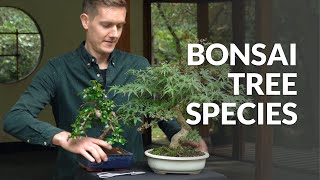Hawthorn Bonsai Care guidelines
Hawthorns can thrive in full sun as well as in partial shade. They are very frost-hardy and also tolerate cold winds, but bonsai trees which are planted in small containers should be protected from excess winter rain and strong frost for safety.
The hawthorn needs a lot of water during the growing season and the roots should not dry out, otherwise the leaf tips become brown. In winter the roots should be kept slightly moist. Although the hawthorn can cope with quite a wide range of pH value, it does not like very calcareous water. Continue reading about watering Bonsai trees.
Watering
Free lecture from the Beginners CourseDuring the growing season feed the tree every week with liquid fertilizer or apply a solid organic fertilizer every four weeks. Use a balanced product with sufficient phosphorous, potassium and micronutrients to promote flowers and fruit.
Older branches of the hawthorn are best pruned in March. Use cut paste to avoid dry-back of the bark near a cut wound. Large wounds take years to heal over. Young shoots are trimmed back to two or three leaves during the growing season when they have grown 4-6" long (10-15cm). Avoid cutting back to the same point repeatedly because this will produce ugly knobs. Continue reading about pruning Bonsai trees.
Hawthorns are quite flexible and easy to wire, but beware of the thorns. It can be a good idea to remove them before wiring. Substantial wiring should be done during winter dormancy when there is no foliage in the way. Younger branches and shoots can be wired during the growing season. Old stiff branches can be shaped with guy wires.
Hawthorn trees should be repotted every two or three years in spring before growth begins. Up to one third of the roots can be pruned. Use a well-draining standard soil mix with a neutral pH value. Continue reading about repotting Bonsai trees.
The hawthorn can be propagated from from seed in spring or from semi-hardwood cuttings in mid-summer. Air-layering does not work in most cases. Special cultivars are grafted by professionals.
Aphids, scale, caterpillars, vine weevil larvae, gall mites, rust, powdery mildew, leaf spot fungal diseases and fire blight can attack the hawthorn. If pests or diseases occur, use a specific pesticide or ask a professional gardener for help in severe cases. For more detailed information on these techniques, check out our Bonsai tree care section.

Hawthorn bonsai (Crataegus)
General information about the Crataegus Bonsai tree
In spring small white or in rarer cases pink or red flowers appear in clusters, followed by small red apple-shaped fruit in autumn. The leaves of the hawthorn are small, dark green and toothed or lobed. Crataegus trees can become around 500 years old and their trunks thicken quite slowly. They develop a beautiful rough bark with age, take pruning very well and ramify willingly. All these features make the hawthorn a good choice for bonsai. Unfortunately older trees from gardens, hedges or nature are not easy to collect and many die after they are dug out. Good hawthorn bonsai material is often offered by bonsai traders and professional yamadori collectors. The most often used species for bonsai are the Common hawthorn (Crataegus monogyna), the Midland hawthorn (Crataegus laevigata) and its popular cultivar 'Paul's Scarlet' with double red flowers, and the Japanese hawthorn (Crataegus cuneata). If you need help identifying your tree, take a look at our Bonsai tree identification guide.





